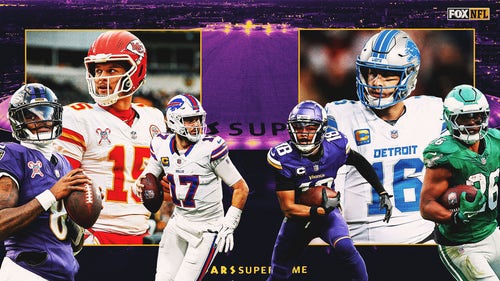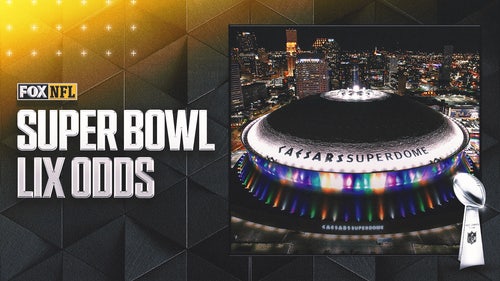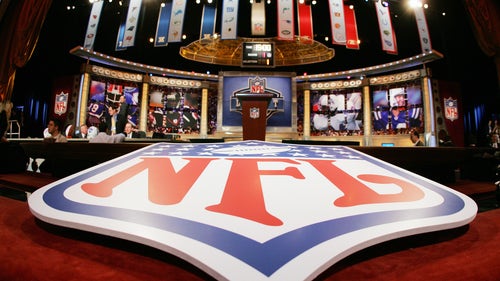
Midway through NFL season, football ratings are down
NEW YORK (AP) Midway through a season remembered for its protests by some players during the national anthem as much as bone-crunching hits, viewership for NFL football games is down 5 percent from last year.
The NFL has slowed a decline that was more pronounced in 2016, and the erosion is actually less than it is for other forms of television programming. Yet Wall Street analysts have noticed the trend and sports programmers are searching for reasons. The NFL's aura of invincibility as an entertainment product has taken a hit.
''It's certainly not cause for panic,'' said Rick Gentile, a former CBS Sports executive and now a Seton Hall University professor, ''but they like to keep going up.''
The average NFL game this season has attracted 14.8 million viewers, down from 15.6 million at the same point last year, the Nielsen company said. The decline was 14 percent between the 2015 and 2016 mid-seasons, although more people returned when election year politicking left the airwaves.
What has put the NFL in news headlines this fall, instead of just the sports pages, is the protest primarily by black players about the treatment of minorities by law enforcement. It has been expressed most often by players kneeling for ''The Star Spangled Banner'' before the games, an action that incurred the wrath of President Donald Trump.
It briefly brought the national anthem back to TV broadcasts. Since then, the networks usually tape it in case there's a significant protest to report.
Asked about the impact of the protests, NFL spokesman Alex Riethmiller said the league believes the ratings drop is part of a broader trend in television consumption instead of a single issue or controversy.
Yet Gentile, who runs a nationwide poll on sports issues for Seton Hall, said his surveys show differently.
''I was in denial for a while,'' he said, ''but every time we asked the question, `why do you watch fewer games?' it came back the same way - the protests.''
In the last week of September, Seton Hall's poll of 850 people found that half were watching the same number of football games they watched in the past. Twenty-nine percent said they watched fewer games, 5 percent said they watched more and the remainder didn't know. Of the people who watched fewer games, 47 percent said it was because of the protests, by far the most frequent reason cited.
Shrinking audiences are the norm, rather than the exception, for most TV shows, and the NFL points out that the audience for prime-time broadcast programming has dropped 9 percent this fall. That comparison isn't totally fair since one of the biggest reasons ratings are off for entertainment shows - people recording them to watch later - usually doesn't apply to a live event like football.
Two worries for the rest of the NFL season are injuries that have sidelined marquee players like Odell Beckham, Jr., Aaron Rodgers and J.J. Watt, and lousy teams with little to play for in major markets like New York and Chicago. Viewership for this past weekend's games was the lowest of the season, Nielsen said.
The NFL has focused with some success this season on improving prime-time products, said Michael Nathanson, an analyst for MoffettNathanson Research. Viewership is up 5 percent for ESPN's ''Monday Night Football,'' which is concentrating this year on rivalry games between teams in the same division. In another healthy sign, ad prices for NBC's Sunday night game are going up 12 percent next year, according to a survey by Variety magazine.
''Ratings go up and ratings go down, but the NFL is actually stronger than it has been in recent years, relatively speaking, to the rest of the television world,'' said CBS Sports President Sean McManus. ''The good news is that viewers are consuming more NFL programming. We're just trying to make sure that we still allow access to that programming without hurting the traditional packages.''
The chief weakness has been the Sunday afternoon games, the league's bedrock, and among younger viewers. Young fans weaned on video games are increasingly attracted to ''Red Zone'' products that allow them to peek in at key moments in different games and highlight packages of big plays, instead of sitting through contests that last more than three hours.
Wall Street analyst Omar Sheikh this fall downgraded his profit estimates for the parent companies of CBS and Fox, the two networks that broadcast Sunday afternoon games, and cited football ratings as his primary reason.
One worry among TV executives, voiced in a company earnings call last week by 21st Century Fox CEO James Murdoch, is an oversaturation of the market. The concern is primarily focused on the NFL's Thursday night game, which was added in recent years.
''I do think that preserving the scarcity value of those events and that audience is something that is worth thinking about,'' Murdoch said.










